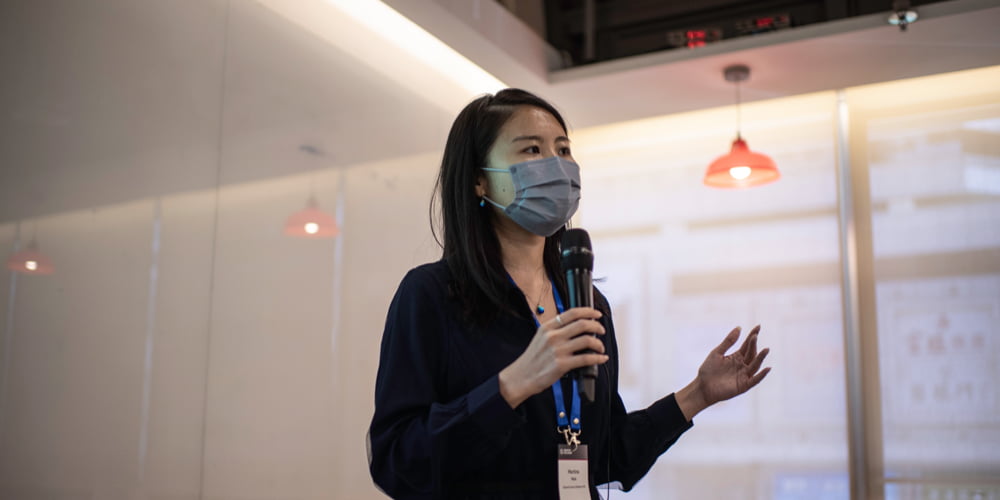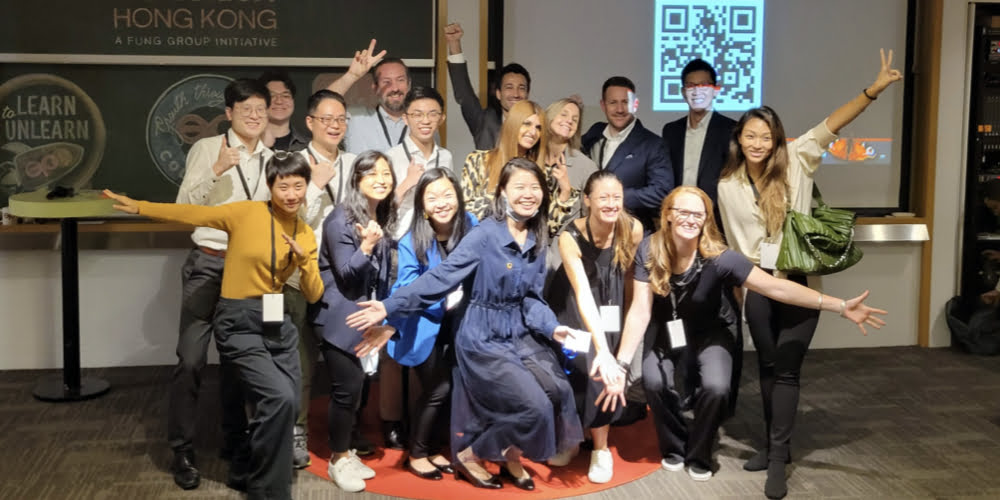Written by Martina Mok, SVIHK Head of Programmes & Partnerships
One decade ago, the Creating Shared Value movement was born at Harvard Business School, spurred by a few changemakers’ vision for a radical new way to mobilise the power of business toward society’s unresolved challenges.
Fast forward to 2021, we have just celebrated ten years of the CSV movement growing from concept to practice, fueled by an ever-growing community of changemakers, from the Americas to Asia Pacific, from Europe to Africa and beyond.
What’s next? Will CSV make it into the mainstream? That’s up to you.
As you continue on your journey, I invite you to draw on what our team has learned – and to challenge these – through three-plus years of connecting and enabling Hong Kong’s most passionate changemakers across business, civil and public sectors.

1. Dream Big
Just as an example: People said in 2019 that the vision for CREATIVE COLLISION as a highly experiential non-conference was too ambitious, too complicated, too much for limited resources. With a big dose of teamwork, tenacity and creativity, we’ve pulled it off, every time a little grander. It’s possible to defy the odds, the norm.
Likewise, our community started with a few ambitious, visionary individuals – Gordon Watson, Peter Yates, Kathryn Greenberg, Patricia Lau, Gaëlle Loiseau…to name but a few. With your help, we have propelled the awareness and interest around Creating Shared Value to the boardroom agenda and mainstream media.
Since 2017, we have together touched thousands more individuals, who have gone on to spread and apply CSV approaches across Hong Kong and beyond. It’s all thanks to you and your ripple effect.

2. Convene Diversely
Actively breaking silos is hard, but fun. The key is to be conscious of your echo chamber. We still have a ways to go ourselves to truly achieve tri-sector perspectives, but it’s always our goal. The most common piece of feedback on why CREATIVE COLLISION is enlightening: It uniquely brings together diverse people – not just in terms of business, NGO, social enterprise backgrounds, etc. – but by age, ethnicity, gender, culture, any spectrum.
The truth is that even social impact, sustainability and innovation events start to attract and rely on the same crowds. How can we build in steps to mix it up – even just across these three, to start? And then look for the mid-career executives searching for purpose, a few frontline social service leaders, a couple public sector servants keen to transform from within, and some brave youth leaders. Curating that mix is an art but absolutely effective, as shown by the quality of ideas at Exec Labs. The same can be applied to convening a task force for redesigning your business.
3. Explore the Gaps
Once you have those voices in the room, make sure to draw them out. To truly unlock the inherent expertise in a group, we design interactions to be flat, equitable – no high stages, more participant voices. Notice the traditional power dynamic and flip it. As convenor, you can empower the underrepresented voice and instill confidence.
Another tool is of course human-centred design, coupled with systems thinking. But while business has been running design thinking sprints for years, often these workshops are missing true diversity in the room, a lack of ownership on resulting ideas, or no clear pathway for an excited individual to refine a promising idea and pitch up and around for resources.
Also, we need to spend more time upfront on the questions and assumptions. People in Hong Kong especially are incredibly solution-oriented, pragmatic, resourceful. We find it difficult to focus people on understanding the underlying problems, to look for unidentified gaps, rather than latch on to surface symptoms to solve (e.g. high entry-level turnover, unwillingness to pay green premium). We’ve learned to isolate the identification of business pain points from specific social sub-issues, before a consideration of unconsidered connections, to then ideate around.

4. Try it & Track it
Experimenting is where social enterprises and SMEs are often braver and quicker (as seen at Impact Auction or CSV Showcase), an area where larger organisations can benefit from collaboration to trigger mindshifts and “disrupt” inside from outside. Surely this is a reason why more conglomerates are now crowdsourcing impact startups and hackathons for sustainable business integrations.
What we have learned from partners: Innovations that successfully go to pilot usually involve inspiration from outside, commitment from within, AND curation by an in-between party, all blended toward the readiness to try. That is, someone in the organisation identifies a business need, matches to a potential solution in the market, that still needs to be refined for scalability. Put that way, doesn’t it sound like any R&D or product refinement process, simply with impact baked in?
Social impact measurement is where businesses will need to invest in upskilling, as leaders work out how to turn ESG compliance into risk management and CSV opportunities. That’s another piece which we will be building to support in future.
5. Share your Story
Storytelling is the key to amplifying change. Some of your organisations already practice Shared Value – these gems just need to be dug out, curated and made intentional to maximise its business and societal value.
Similarly, each of you as a changemaker has a story around purpose that can move others. Our hope is that these stories will help people see how personal passion and professional experience can be applied to anyone’s role and capacity to influence wider change.
At our recent Hong Kong film premiere of Beyond Zero, we shared the story of Ray Anderson’s leadership of Interface’s transformation to net zero and beyond. One clear message is that it takes a village to come along with you for the kind of radical overhaul our planet needs.
Today, we are in the last decade to achieve the Sustainable Development Goals by 2030. Our burning challenge is to make those global goals our local business, every single day.
Only with radical collaboration and collective action – starting today – can we achieve the kind of exponential impact we envision.
So tell us, what’s your vision for 2022 and beyond, and how can we help each other on this journey towards net positive impact?
About Martina Mok
As SVIHK former Head of Programmes & Partnerships, Martina has managed member services and built tri-sector partnerships to promote the adoption of Shared Value. She is passionate about catalysing sustainable change through a business-led, cross-sector approach.

